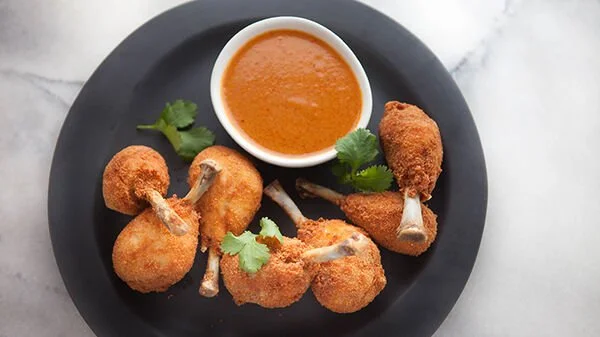When it comes to food, we all have our favorites. But lurking in the shadows of culinary preferences are certain dishes that tend to be less celebrated. The least liked ethnic food can often provoke strong reactions—some turn up their noses, while others savor every bite. What drives these opinions? Is it a matter of taste or something deeper, like cultural biases? Join us on a journey through this fascinating topic as we uncover the surprising truth behind those misunderstood cuisines and explore why broadening our palates might just lead to delightful discoveries.
The impact of cultural biases on food preferences
Cultural biases play a significant role in shaping our food preferences. These biases often stem from upbringing, societal norms, and exposure to different cuisines.
For many, the first experiences with food are heavily influenced by family traditions and regional dishes. As individuals grow older, they may find it challenging to step outside their culinary comfort zones. This can lead to the dismissal of entire cuisines based on preconceived notions.
Media representation also contributes to these biases. Certain ethnic foods may be portrayed negatively or not at all, skewing public perception. When people associate unfamiliar foods with stereotypes or misconceptions, it’s easy for them to develop an aversion.
Moreover, cultural pride can create barriers, too. Some might feel that embracing other cuisines threatens their own heritage. This creates a cycle where diverse flavors remain unexplored and least liked ethnic food becomes marginalized without merit.
A breakdown of commonly disliked ethnic foods and their origins
Certain ethnic foods often find themselves at the bottom of popularity lists. Take durian, for example. This Southeast Asian fruit is notorious for its strong odor, which can be off-putting to many.
Then there’s natto from Japan. Made from fermented soybeans, its sticky texture and pungent smell lead some to shy away. Yet, it’s a staple in Japanese breakfasts.
Moving to Middle Eastern cuisine, we encounter haggis—traditionally made from sheep organs mixed with oats and spices. The concept alone can deter adventurous eaters.
Consider stinky tofu from China. Its fermentation process gives it an intense aroma that challenges even the most seasoned palates.
These foods may not win universal acclaim, but each carries cultural significance and history worth exploring.
Exploring the health benefits and nutritional value of these foods
Ethnic foods often face unwarranted criticism, yet many are packed with health benefits. Take kimchi, for instance. This fermented Korean dish is rich in probiotics, which can enhance gut health and boost immunity.
Then there’s durian, the infamous fruit known for its strong smell. Despite its polarizing reputation, durian is high in vitamins C and B6 while providing healthy fats that can support brain function.
Consider fufu from West Africa; it’s made from starchy vegetables like cassava or yams. Fufu serves as an excellent source of carbohydrates and energy, fueling your daily activities.
Not to be overlooked is haggis from Scotland. While it might seem unconventional, it’s loaded with protein and iron—nutrients vital for muscle repair and overall vitality.
These examples illustrate how least liked ethnic food can offer not just nutrition but also unique flavors that deserve a place on our plates.
How to incorporate these foods into your diet in a more appealing way
Experimenting with flavors is key. Start by adding familiar ingredients to least liked ethnic foods. For instance, if you’re trying sauerkraut but find it too sour, mix it with sweeter elements like apples.
Presentation can also make a difference. Serve dishes in vibrant bowls or alongside colorful sides. The visual appeal often enhances the eating experience.
Try fusion recipes that blend these ethnic foods with your favorites. Think tacos filled with kimchi or a savory curry pizza. This method introduces new tastes gradually while keeping comfort food close at hand.
Cooking methods matter too; roasting instead of boiling can elevate textures and intensify flavors.
Share meals with friends who are more open-minded about diverse cuisines. Their excitement might just inspire you to dive deeper into unfamiliar dishes without hesitation.
Challenging stereotypes and embracing diverse cuisines
Challenging stereotypes around food can open up a world of flavors. Many people hold preconceived notions about certain cuisines based on cultural or regional biases.
By stepping outside of comfort zones, we can discover the rich stories behind each dish. These narratives often reflect history, tradition, and innovation that shaped them.
Embracing diverse cuisines allows for connections between cultures. Sharing meals can foster understanding and appreciation in ways that go beyond mere taste.
Experimenting with unfamiliar ingredients encourages creativity in cooking. It transforms mealtime into an adventure rather than a routine obligation.
Letting go of biases helps to break down barriers. When we savor dishes from different cultures, we celebrate diversity itself—one plate at a time.
Conclusion: Why it’s important to expand our palates and embrace unfamiliar foods
Expanding our palates opens doors to a world of flavors and traditions. Each dish tells a story, connecting us to different cultures.
When we embrace unfamiliar foods, we challenge preconceived notions. This exploration fosters understanding and appreciation for diversity in culinary practices.
Tasting new cuisines can lead to discovering hidden gems that might become favorites. It encourages curiosity about ingredients and preparation methods.
Moreover, trying various dishes promotes healthier eating habits. Many ethnic foods are rich in nutrients but often overlooked due to cultural biases.
With every bite, we break down barriers created by stereotypes around food preferences. Embracing this diversity enriches our lives and creates memorable experiences at the dining table.
FAQ’S
The world of food is vast and varied. Exploring different cuisines can open up new tastes, textures, and culinary experiences. Embracing lesser-known or least liked ethnic foods may just surprise your palate. By challenging our biases and expanding our culinary horizons, we can celebrate diversity in flavors while also enjoying the many health benefits these dishes offer.
FAQ’S
What are some examples of least liked ethnic foods?
Common examples include durian from Southeast Asia, natto from Japan, haggis from Scotland, and fermented fish like surströmming from Sweden.
Why do people tend to dislike certain ethnic foods?
Dislike often stems from unfamiliarity or cultural bias. Textures and flavors that seem strange to one culture might be a beloved staple in another.
Are there any health benefits associated with these disliked foods?
Yes! Many least liked ethnic foods have high nutritional value. For example, natto is rich in protein and probiotics; haggis contains heart-healthy ingredients like oats; durian has vitamins C and B complex.
How can I learn to enjoy these types of cuisine?
Start by trying small portions combined with familiar ingredients. Cooking methods that enhance flavors or textures may make them more appealing, too.
Where can I find recipes for less popular ethnic dishes?
Many online cooking blogs focus specifically on regional cuisines. You could also explore cookbooks dedicated to international recipes at your local library or bookstore.
Is it okay not to like some types of food?
Absolutely! Taste is subjective. It’s perfectly fine if certain dishes don’t appeal to you—food preferences vary widely across cultures and individuals alike.















Leave a comment